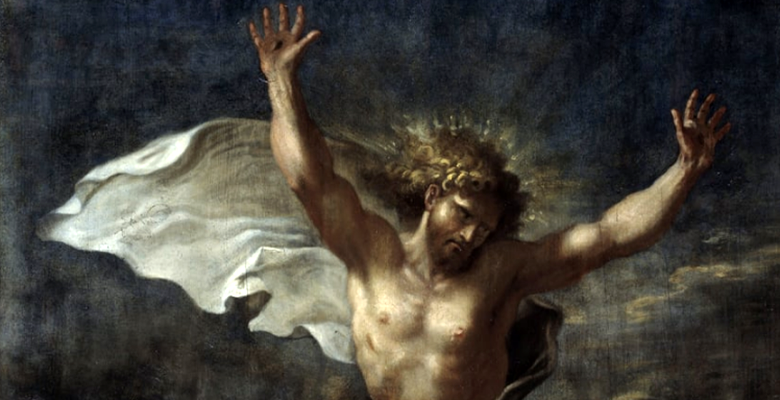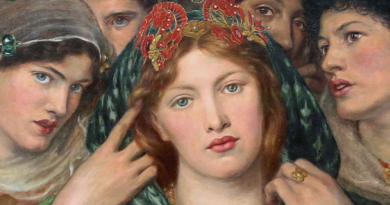Resurrection of Christ by Salvatore Rosa – Sacred Art & Story Of A Painting
The floating figure of Christ, defying the laws of gravity. Ritual veils, torn off by gusts of wind, fluttering and revealing the resurrected body. Reflections of the golden glow from the halo on the clouds. Facial features as if copied from a Byzantine icon, and golden curls. Wounds on the palms, left as a trace of death and proof of life. His calm, seemingly indifferent gaze is either down somewhere or to nowhere. The resurrected Christ himself by Salvatore Rosa.
The depiction of the most mysterious biblical event – the Resurrection of Christ – can hardly be called a common phenomenon in visual arts. Artists do struggle with the theme of Resurrection, despite the fact that this Christian subject is well known and well studied. And although the traditional iconography of this phenomenon is simple, it is quite challenging to convey the atmosphere and the mood in a composition defined by the boundaries of one canvas.
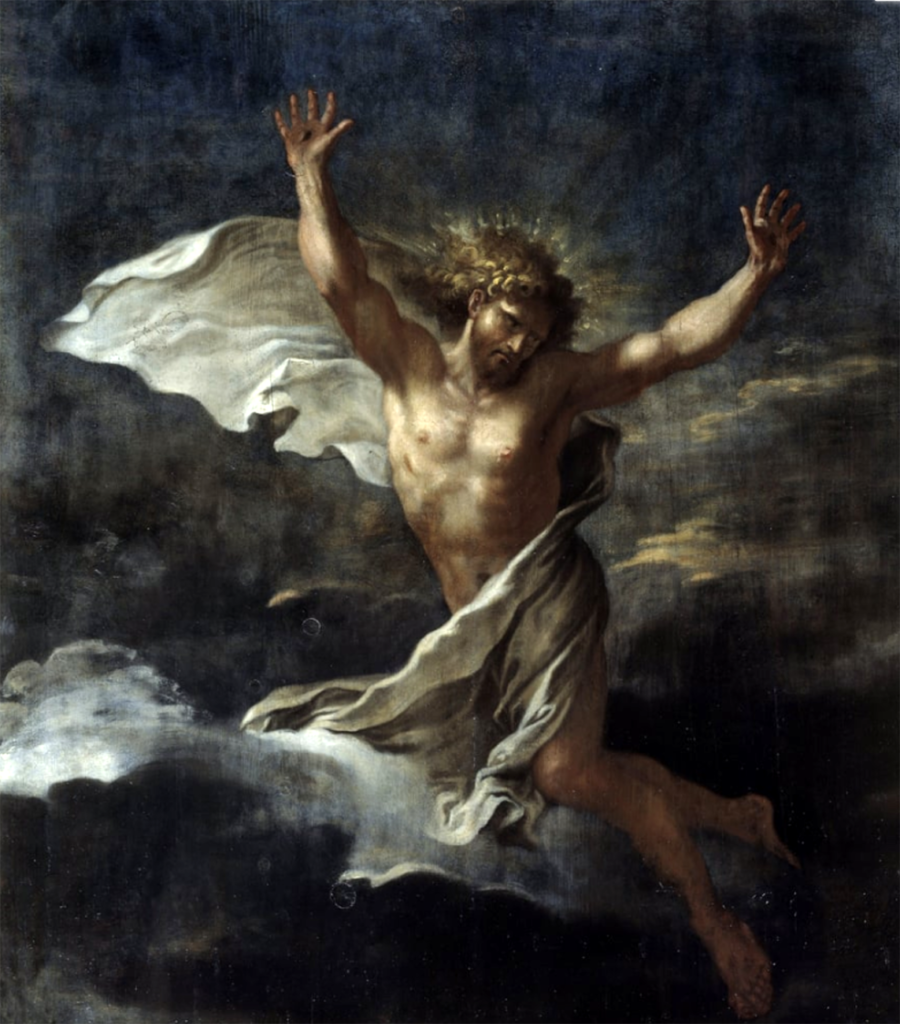
Salvatore Rosa (1615–1673 ), an Italian painter of the Baroque era, is one of those artists who dared to depict the very moment of the Resurrection of Christ.
It was a long search process for Rosa to find the right pose for the composition of his painting. As Dr Eckhard Leuschner, art historian from Würzburg, Germany, points out in one of his presentations, the artist tried out a variety of solutions for the representation of a risen and triumphant Christ (here below are just two out of many).
Position of arms, legs, head, number of figures, should there be a tombstone, soldiers, silhouette of a cross, victory flag?
The preliminary drawings show how the artist’s vision has evolved and his idea of the event itself that he will depict on canvas has changed. A painting that did not yet exist was already born, began to live and become, starting from the first touch of pen to paper.
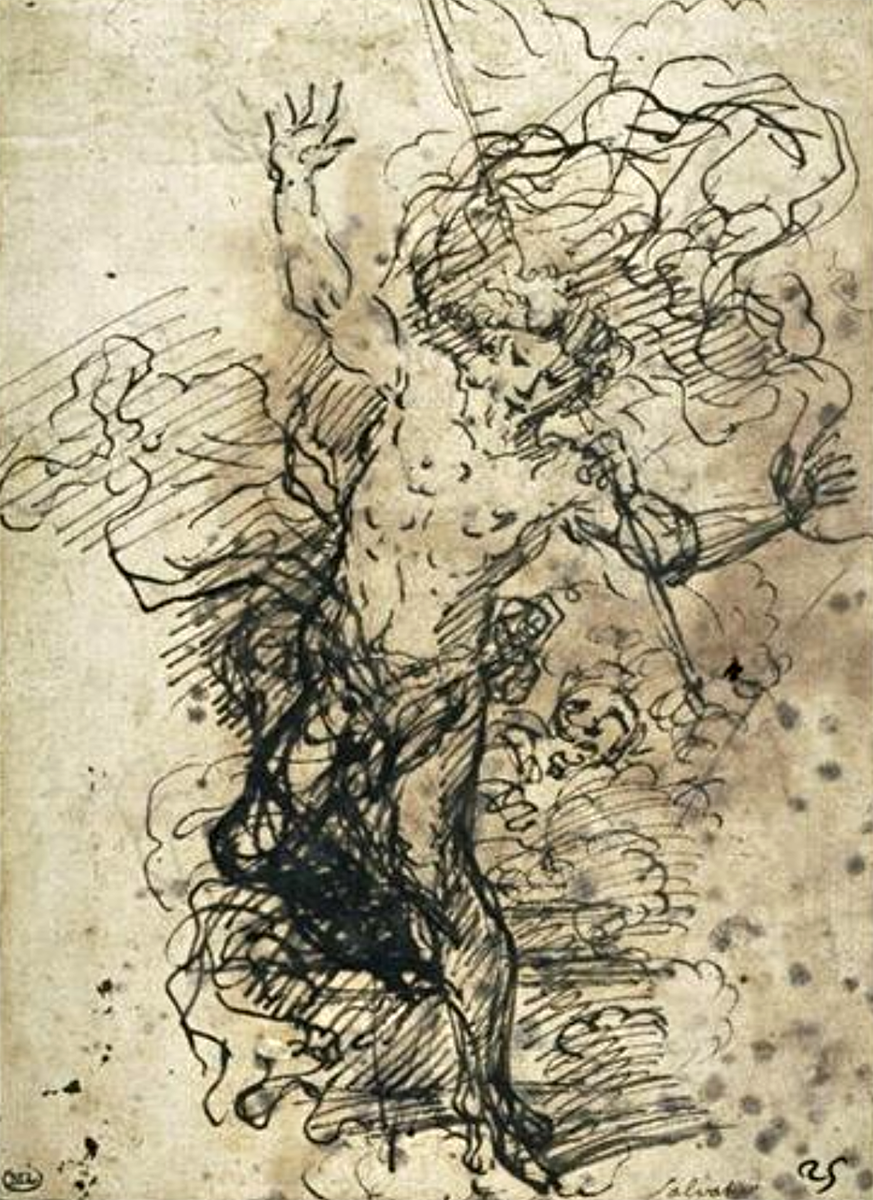
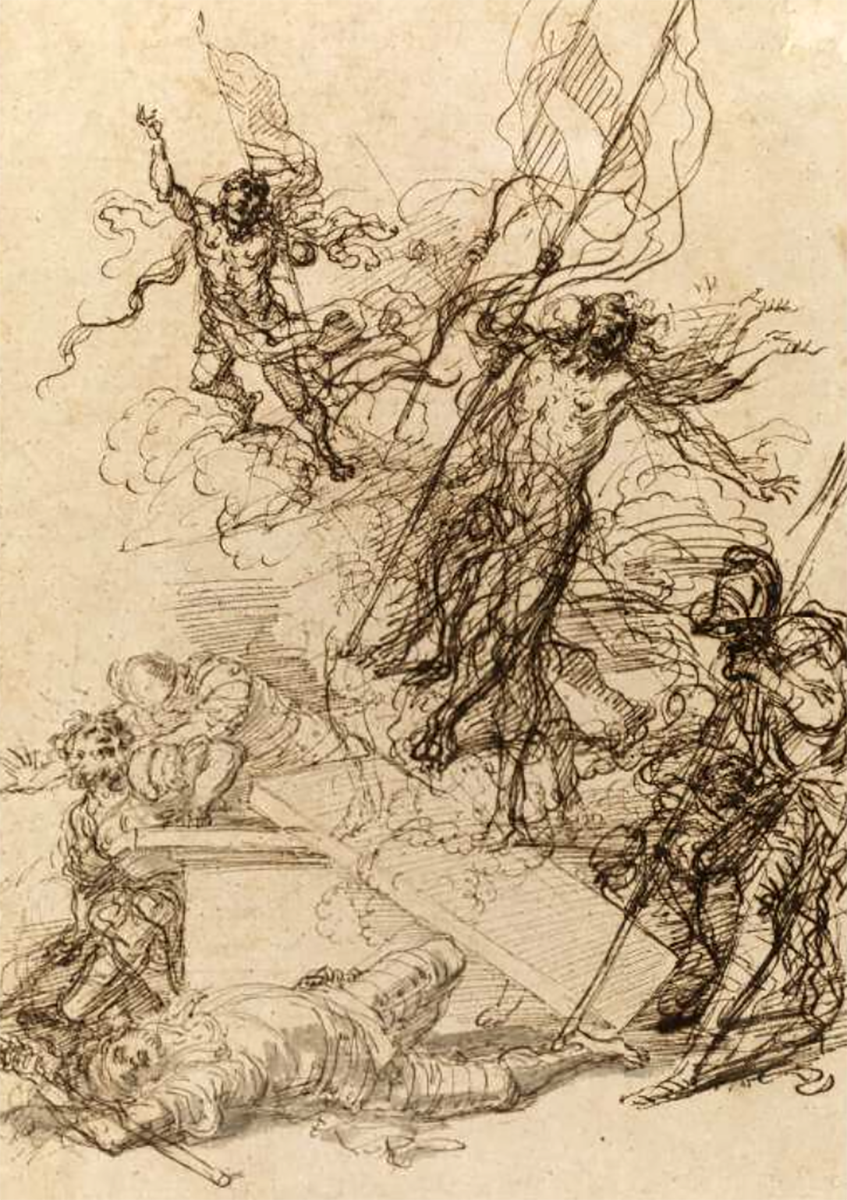
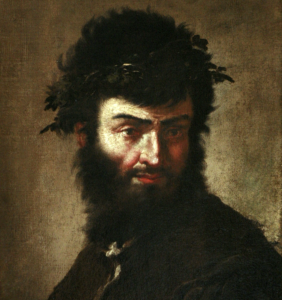
Salvatore Rosa, originally from Naples, lived and worked in Rome and Florence.
As a child he was sent by his parents to a convent, his father wanted Salvatore to become a priest. But this was not destined to happen, since the boy fell in love with drawing and began spending more time with his artistic uncle, Paolo Greco, learning from him the basics of the fine arts.
Then he apprenticed to more famous masters who lived and worked in Naples at that time – Aniello Falcone, whose style is often compared to Velázquez, and Jusepe de Ribera, who is also known as Spagnoletto and is famous for his works for the Spanish court.
After couple of years of apprenticeship and having good recommendations, Salvatore goes to Vatican – to study painting at the Bamboccianti art school which was led by Pieter van Laer, was known as Bamboccio. The schools main emphasis was a satirical depiction of the daily life of the lower classes in romantic landscapes or luxurious surroundings. Later he would speak very negatively about the school’s style and approach to the use of satirical images in painting.
Salvatore Rosa considered himself a painter-philosopher (in addition to all his other talents, he was also an excellent writer). He was obsessed with success, he wanted to belong to academic artistic circles and to be constantly talked about.
The only thing that remained from the school in his work were romantic landscapes. And even though In one of his diaries Rosa said that he wished he never painted landscapes, he became a master of romance in landscape painting.
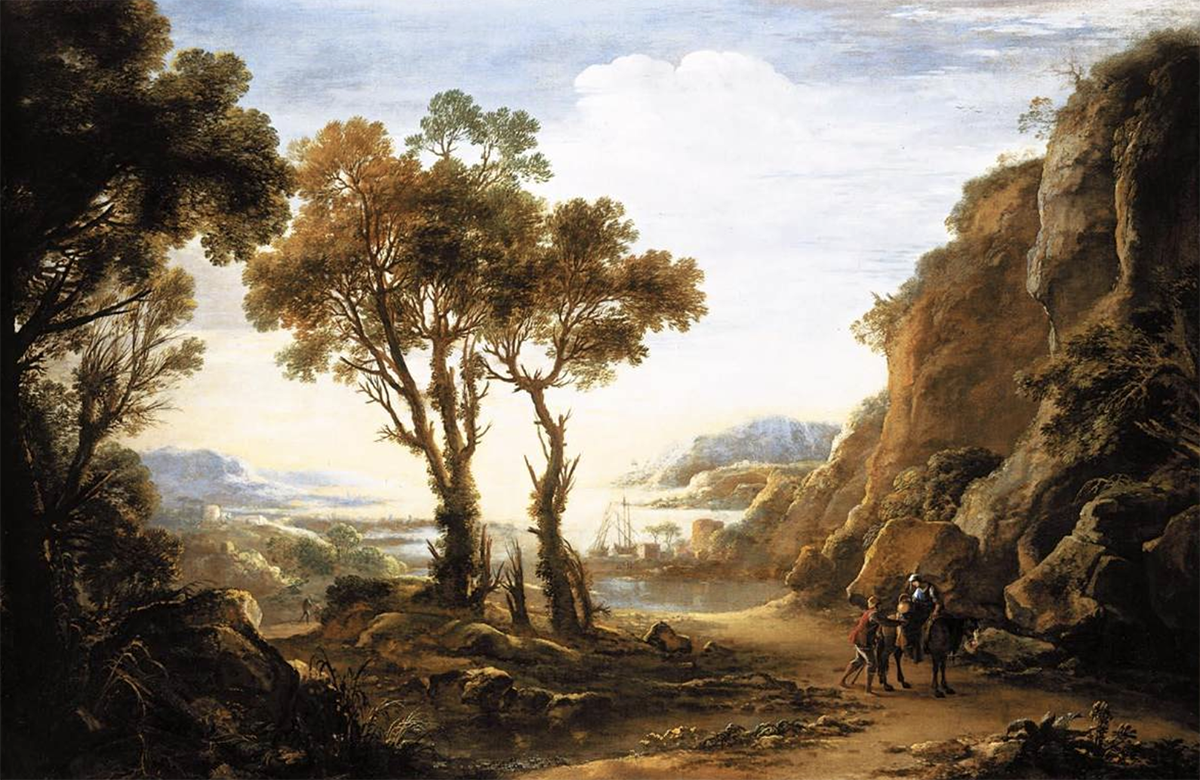
Coming back to Rosa’s Resurrection of Christ, it’s worth mentioning that the iconographic tradition of the 17th century (and even contemporary requirements of sacred art) attributed this biblical scene with the either the tombstone, or the guards, or the three Maries, or the angel showing the empty tomb. However, the roots of this tradition go back to the biblical description of this event, and this description does not contain specific details of the fact of the resurrection itself.
The challenge for any artist in depicting the resurrection is to show Christ in two “dimensions” – returning to the physical world and at the same time continuing his journey outside of this world, in his risen being.
Christ’s victorious soaring was quite new for the Italian art scene (Christ was still often depicted with one leg in the coffin and the other on the ground). But knowing the rebellious nature of the artist and his desire to ride the wave, it is quite possible to imagine that he would have chosen exactly that new, just emerging in the Italian school of painting, compositional pose of the floating Christ.
The standard of the resurrection in art changed in 1593 when Annibale Carracci presented his The Resurrection of Christ for the Palazzo Luchini in Bologna (that’s why it’s also often called the Luchini Resurrection or the Pala Lucchini).
It’s believed that Annibale Carracci was the first to depict Christ floating in the air – but this is not true. He was the first to “kill two birds with one stone” – he made Christ float but remained more or less within the limits of what was prescribed by the current iconography and theology for the Resurrection, which is at least one foot of Christ on the ground. If you look closely at Carraccio’s feet of Christ in this painting, you’ll see that he in fact is floating but but the landscape background is so masterfully placed behind one of his feet that there is no doubt about his “foot on the ground.” The first impression is that Christ is standing on a rock. Floating but still standing.
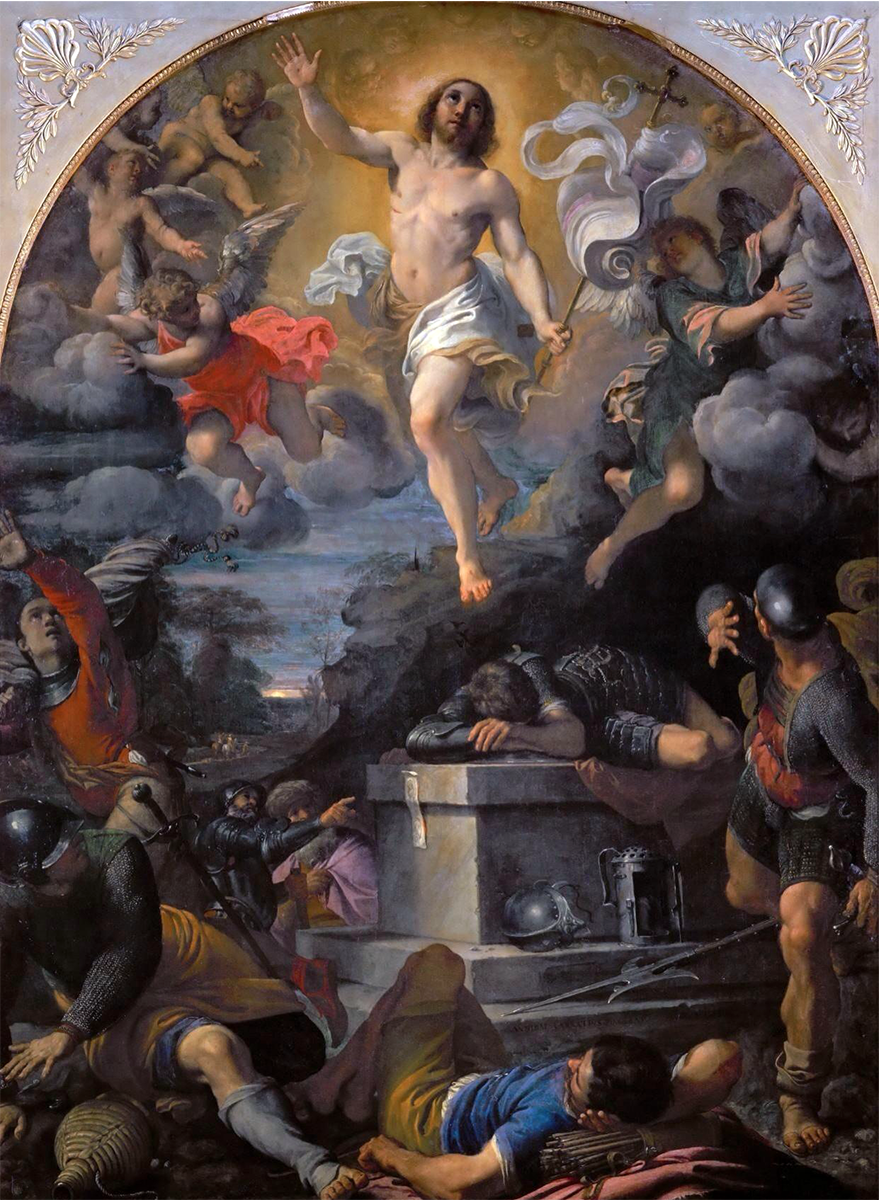
And if Annibale Carracci in 1593 managed to become the successful founder of a new iconographic tradition, then the same cannot be said about Paolo Veronese, who placed Christ in the air long before Carracci – in 1570. Yes, it’s Paolo Veronese, who became the first to depict the floating Christ in art.
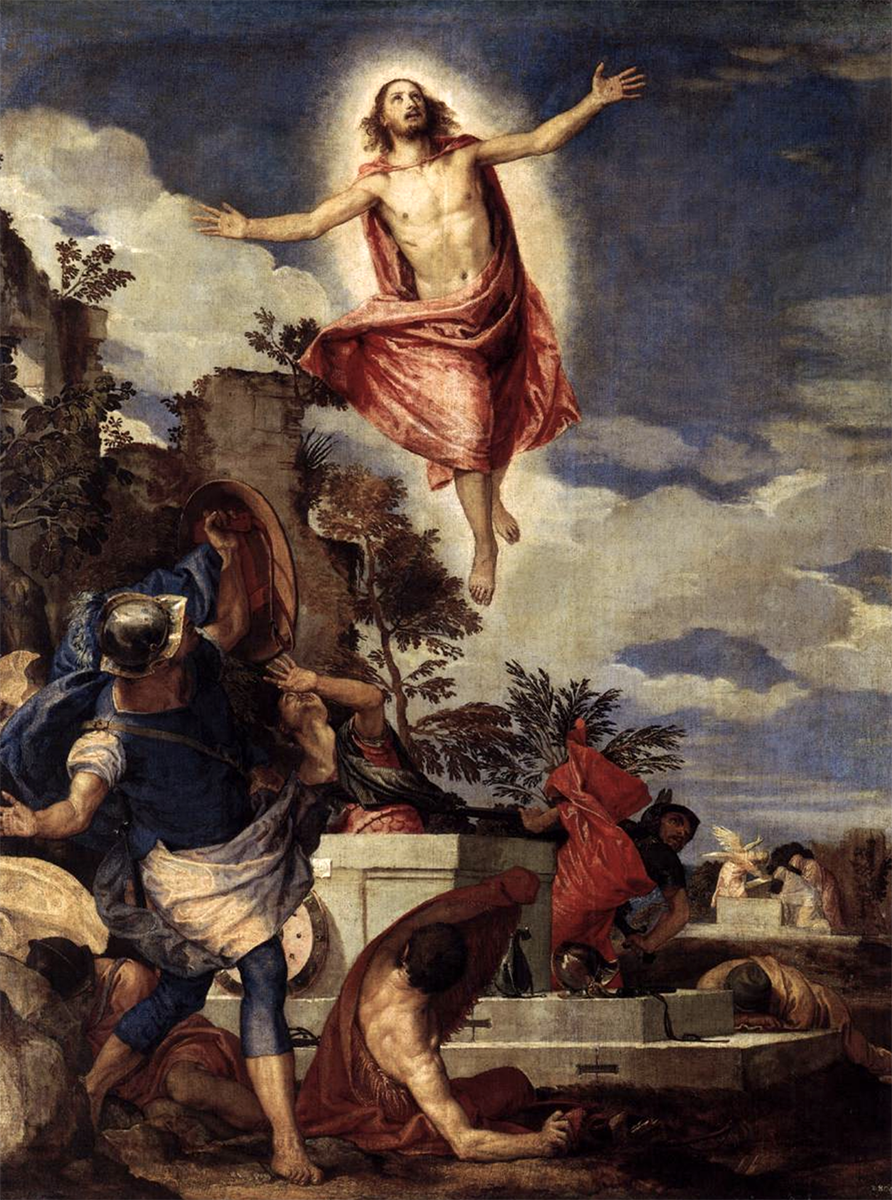
However, the true revolutionary in art was Caravaggio. It was him who made Christ step out of the coffin, putting one foot outside of it. Unfortunately, that painting The Risen Christ by Caravaggio has not survived to this day…
***
Salvatore Rosa always wanted to be a very successful but also very conventional painter. And it must have beed difficult for him, a rebel inside, to chose the conformity instead. All his artistic life he created artworks for recognition. He worked for Medici and had other influential patrons, he painted landscapes, witches, allegories and mythology, and only at the end of his life he created several altarpieces. He understood his patrons and commissioners and in his satirical manner he aptly described his contemporaries buying his paintings:
“They love to see in paint what they hate to see in real life.”
The Resurrection of Christ was made for the church of Santa Maria in Montesanto in Rome and installed in 1677. The artist did not live to see the day when the painting was placed in the church (Salvatore Rosa died in 1773). It is also unfortunate that this amazing masterpiece, which meant to be an altarpiece, never made it to the high altar.
In 1802, this painting was acquired for the King of Naples and then it became part of the Salerno collection. Today the Resurrection of Christ by Salvatore Rosa is at the Musée Condé in Chantilly, France.

Dimitri Ross
Dimitri Ross, a contemporary figurative visual artist. Based in Florence, Italy. Currently he masters the academic painting and sacred art in Florence by deepening his artistic research on painting techniques of the Italian Renaissance.


